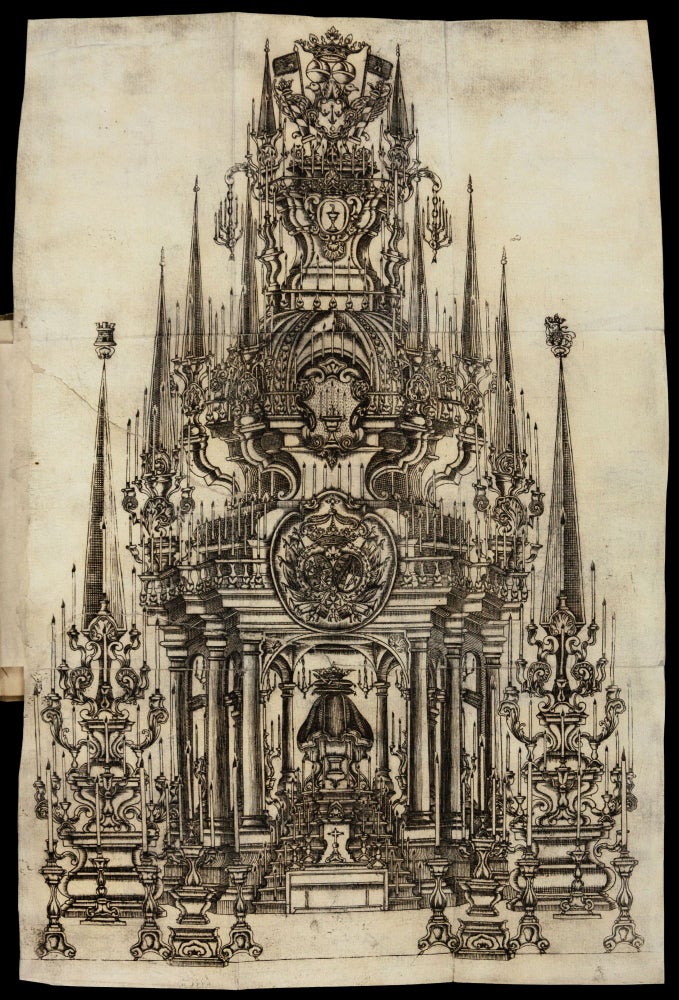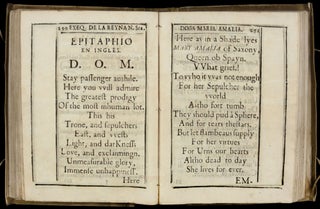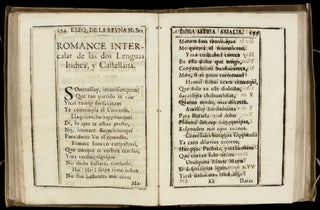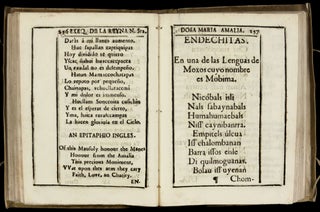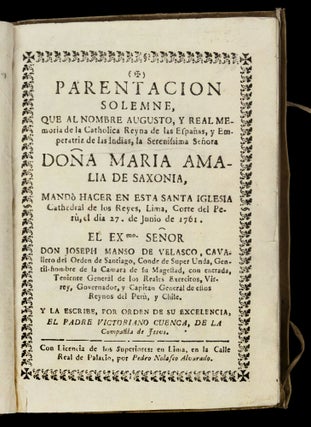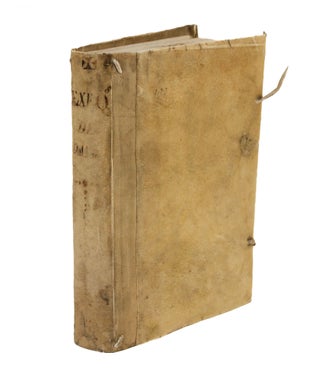Parentacion solemne que al nombre augusto, y real memoria de la Catholica Reyna de las Españas, y Emperatriz de la Indias…Doña Maria Amalia de Saxonia, mandò hacer en esta Santa Iglesia Cathedral de los Reyes, Lima, Corte del Perù, el dia 27 de Junio de 1761.
4to. [19.2 x 14.1 cm], (2) ff. (half title and title), 434 pp., (11) ff., 43 pp., (1) p. blank verso, (1) f. errata (bound in the preliminaries in some copies), with woodcut tailpiece and 1 large [50 x 33 cm] folding engraved plate of the funerary monument. Bound in contemporary limp vellum, ties intact, title in manuscript on spine, (monastic?) brand on top edge. Minor rubbing and edgewear to binding, lower headband cores detached, wear to pastedowns. Forms of quire T arranged out of sequence during imposition (corrected in some copies), two mended tears to folding plate, otherwise internally very well preserved and complete. Rare first and only edition of this Lima imprint recording the funeral exequies held at Lima Cathedral in honor of Maria Amalia of Saxony (1724-1760), briefly Queen Consort of Spain before she succumbed to tuberculosis within a year of her arrival at court in Madrid. The work is notable both for its large folding engraving of Maria Amalia’s funerary monument in Lima and for preserving an extraordinary collection of funerary texts composed at the time in Basque, Italian, German, Portuguese, Catalan, Hungarian, French, English, and two Native American languages: Quechua and the obscure Movima tongue spoken in the Moxos region of the Bolivian Amazon. Victoriano Cuenca (1712-77), author of the Parentacion solemne, explains (pp. 86-98) that the ‘sumptuoso Mausoleo’ of Maria Amalia was designed and built by the architect Antonio Bejarano Loayza, who had recently designed similar monuments for Maria Bárbara of Portugal (1759) and Ferdinard VI (1760). Composed of four rising cuerpos (registers), it was supported by 20 Ionic columns and flanked by two 36-foot-high obelisks, crowned by the lion and castle of the Spanish royal crest. Its rococo ornamentation—most notably the auricular flourishes of the balustrades, spandrels and candelabras—testifies to the growing influence of French rocaille design on Spanish baroque architecture (and, by extension, to that of New Spain) during the mid-18th century. After recounting the program of funerary exequies held on June 27, Cuenca presents the eulogies composed by members of Lima’s religious orders, chiefly sonetos or 10-line décimas, a Spanish form. A selection of poems from the Colegio Real de San Martín, a Jesuit-run lay school in Lima, includes an interesting acrostic sonnet. These efforts are outshined, however, by over 60 pages of verse composed in 11 languages by the Jesuits of Lima’s Colegio Máximo de San Pablo, including a dialogue in French between the town of Lima and the Rímac River, and poems in English (charming). Of exceptional interest are two poems written in indigenous languages, ‘Mobima,’ a language isolate (today still spoken by only 1400 individuals), and Quechua, the lingua franca of the Peruvian Andes. Exequies printed in Indian languages are unusual in contemporary funeral-books; Cuenca, a Jesuit himself, perhaps included them to publicize his order’s activity among the native populace. Published on the heels of the exequies for Doña Maria Barbara de Portugal (Lima 1760) and Don Fernando VI (Lima 1760), which were also printed by Nolasco, the volume concludes with the Oracion Funebre delivered by Augustin de Gorrichategui, a Panama native and later Bishop of Cuzco (1771-1776) who served at the Cathedral of Lima. OCLC locates U.S. institutional copies at Yale, Indiana, Duke, NYPL, and Gordon College.
Sold

